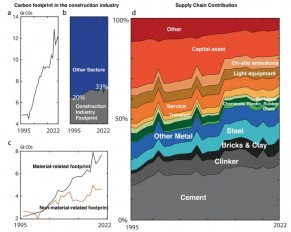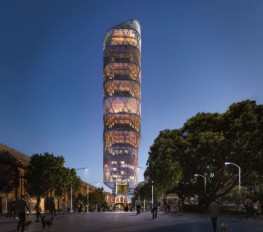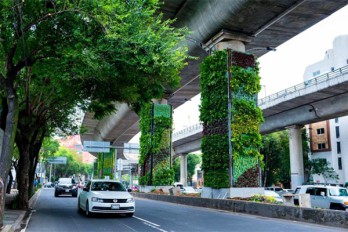Denmark phases in stricter CO₂ emissions rules for building sector

Denmark has updated its national building regulation framework (BR18) to introduce stricter whole-life carbon emissions limits for new buildings, effective from 1 July 2025. The revised requirements reduce the average permitted climate impact of new construction to 7.1kg CO₂e/m²/year, down from the prior threshold of 12 kg CO₂e/m²/year for buildings over 1,000m².
The new regulations expand the scope of covered building types to include almost all new constructions larger than 150m². Previously, only buildings over 1,000 m² were subject to the limit. Emissions associated with the construction process (modules A4 and A5) are now separately regulated, with a dedicated limit set at 1.5kg CO₂e/m²/year from the construction phase alone. The regulation also introduces typology-based differentiated limits: for example, single-family houses, townhouses, and holiday homes over 150 m² are assigned a limit of 6.7kg CO₂e/m²/year in 2025, tightening further to 6.0kg in 2027 and 5.4kg in 2029.
The regulation aims to give earlier-stage design decisions greater influence on carbon outcomes, with civil and structural engineers, material suppliers and construction contractors needing to optimise foundation design, structural systems, material selection (e.g., timber vs concrete vs steel), transport of materials and construction-site operations to comply.
These tighter limits are part of Denmark’s broader national sustainable-construction strategy, and the regulatory updates include an ongoing phase-in: further tightening of threshold values will occur in 2027 and 2029. While the measures mark progress, analysts note the current thresholds still fall short of the more stringent values advocated by industry initiatives aligned with the Paris Agreement and planetary-boundaries science, which call for limits closer to 5.8kg CO₂e/m²/year.
Source: Buro Happold
Want to read more like this story?

Building collapse south of Indianapolis: 2 workers injured
Apr, 04, 2022 | NewsA building under construction collapsed, injuring at least two construction workers, authorities sa...

New simulation tool for building design
Jan, 10, 2021 | NewsA new simulation tool that utilizes many variables for the design and the initial phases of the buil...
The prospects for carbon-neutral buildings
Oct, 27, 2023 | NewsIn the United Kingdom, buildings account for 33% of greenhouse gas emissions and 40% of global ener...

Construction’s carbon footprint to double by 2050, study warns
Nov, 05, 2025 | NewsA new global analysis published in Communications Earth & Environment warns that the constructi...

3D-printed buildings using soil material
Sep, 24, 2020 | NewsResearchers have developed a new technique to construct a building using a 3-D printer and soil mate...

Australia changes construction regulations after Opal Tower's cracking
Feb, 13, 2019 | NewsNew South Wales's state of Australia is about to drastically change its construction laws after the&...

Sydney will accommodate the largest hybrid timber tower in the world
Jul, 08, 2020 | NewsThe tallest hybrid timber building in the world is scheduled to be constructed in Sydney, Australia....

3D printed buildings presented in China's industrial park
Jan, 22, 2015 | NewsA Chinese construction company brings a revolution to the global building and construction industry,...

Carbon Reduction in Focus: Lessons from the Edge London Bridge Project
Jan, 20, 2025 | NewsA bold new addition to London’s skyline is taking shape near London Bridge. This 27-storey sustaina...
Trending

Vertical gardens in Mexico City to combat pollution

Characteristics of Load Bearing Masonry Construction

Taipei 101’s impressive tuned mass damper

Dutch greenhouses have revolutionized modern farming

The Line at Neom faces feasibility reassessment while construction continues

The Line at Neom faces feasibility reassessment while construction continues

King Salman Gate unveiled adjacent to Mecca’s Grand Mosque

